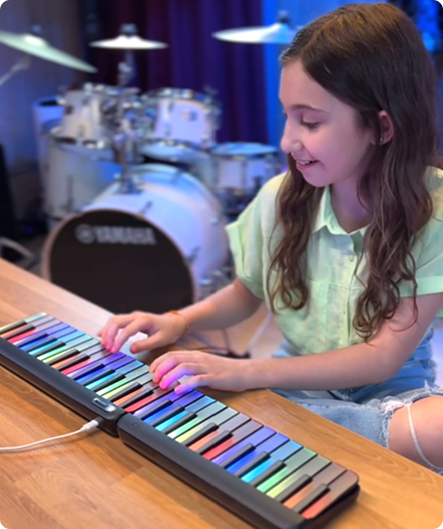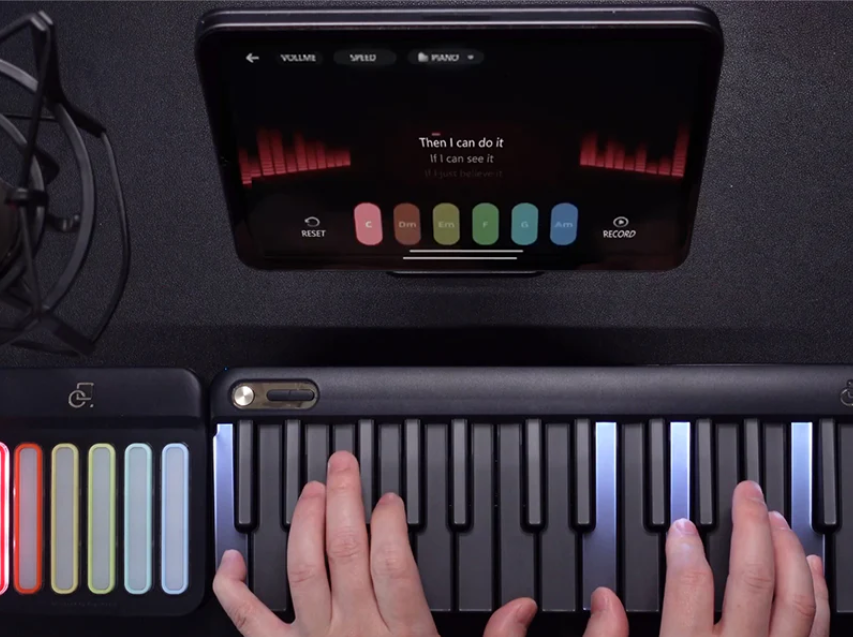
Is a piano an instrument? At first glance, the answer seems obvious, but dig a little deeper, & things get more interesting. Unlike most instruments that fall neatly into one category, the piano straddles several: it has strings, it uses hammers, & it’s played with keys. So what kind of an instrument is a piano?
This overlap leads to some confusion, especially for those just starting. Is it a string instrument? A percussion instrument? Something entirely different?
The truth is, the piano is a hybrid, a fascinating combination of string & percussion, delivered through a keyboard interface. That’s what makes it so unique, & also why it's one of the most popular starting points for new musicians.
Let’s clear up any doubt: yes, the piano is a musical instrument & one of the most important ones in modern music.
The piano stands out because it doesn’t fit neatly into just one instrument category. When people ask, “What kind of instrument is a piano?”, the answer isn’t as simple as “string” or “percussion.” It’s both & that’s what gives it such a wide range of expression.
It turns out the piano is a rare case in music because it doesn’t fit into just one category. Instead, it belongs to several at once.
Because it includes elements of all three, many musicologists call the piano a hybrid instrument, one that blends the best of string, percussion, & keyboard functionality into a single tool.
If you've ever opened up the lid of an acoustic piano, you'll see a fascinating mix of strings, hammers, & dampers. That’s exactly why, when people ask what kind of instrument a piano is, the answer is: a hybrid.
When you press a key on the piano, it sets off a mechanical chain reaction. A small hammer swings upward & strikes a string, causing it to vibrate & produce sound. This vibration is what classifies the piano partly as a string instrument, similar to a harp or guitar.
But here’s where it gets interesting: those strings aren’t plucked or bowed; they're hit, much like a drum. That striking motion is what also makes the piano a percussion instrument, giving it both dynamic rhythm & expressive tone.
It’s no coincidence that so many musicians, both young & old start their journey on the piano. When people wonder what type of instrument a piano is, its role in education is part of the answer.
Unlike many other instruments, the piano lays out music visually & spatially. The keys are arranged from low to high in a straight line, making it easier to understand pitch, scales, & intervals just by looking at them. This makes abstract music theory more intuitive, especially for beginners.
It also teaches melody, harmony, & rhythm all at once. Most instruments focus on just one or two of those elements, but the piano allows players to explore full musical structures right from the start.
Whether you're playing solo or as part of an ensemble, the piano fits in easily. That’s why it's such a popular entry point for both kids learning in school & adults returning to music later in life.
A common myth among beginners is that digital pianos or keyboards aren’t “real” instruments. But here’s the truth: both acoustic & digital pianos are valid tools for learning & playing music.
Digital keyboards might not have strings or wooden soundboards, but they’re designed to closely replicate the feel & sound of traditional pianos. & for anyone asking, is a piano an instrument even if it’s electronic? The answer is still yes.
What matters most is not the gear, but the skills you build. Finger strength, hand coordination, music reading, & ear training all develop the same way, whether you’re using an acoustic grand or a compact digital keyboard.
In fact, for beginners, digital options often make more sense. They’re portable, affordable, & many include app connectivity for guided lessons & interactive feedback.
Scientifically, the piano is classified as a string, percussion, & keyboard instrument all at once. That hybrid identity is what makes it so musically rich & so versatile for players of every level.
Whether you're composing your first melody or learning basic chords, the piano remains one of the most powerful tools in music education. It bridges rhythm & harmony, theory & creativity, structure & expression.
It’s both. A piano has strings inside (like a harp), but sound is created by hammers striking those strings (like drums). That’s why it’s considered a hybrid instrument classified as both string & percussion.
In music theory & instrument classification systems, the piano is seen as a keyboard instrument with elements of both string & percussion families. It stands out because of its ability to play melody & harmony together.
Yes. For beginners, digital keyboards are a great way to start learning. They’re more affordable, easier to move, & often include helpful features like metronomes, lesson modes, & app integration.
Read more

Can You Learn Piano on a Keyboard? Absolutely—Here’s the How‑To
Plenty of new players stare at a slim electronic keyboard and wonder, “Can you learn piano on a keyboard?” Short answer: yes, you can, and thousands do every year. The long answer—covered below—exp...

Understanding What an Electric Piano Is Called & How It Works
You’ve probably heard folks say “electric piano,” “keyboard,” or “digital piano” as if they’re all the same instrument. Yet search engines still get the question “what is an electric piano called” ...